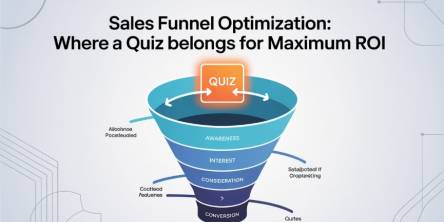Why Magento 2.3 is Essential to Get Robust Ecommerce Solutions

Magento is a scalable, flexible, and extensible platform, which helps to create the best eCommerce solutions for businesses of every size and type. Recently, Magento 2.3 was launched with new innovative features, optimizations, and back-end enhancements. With this latest version, Magento released new tools to help retailers increase their business revenue. Besides, these tools will empower the developers to fulfill their clients’ expectations with more efficiency.
Read on as through this article; we will know about the Magento 2.3 tools and how they can help to improve your eCommerce store performance in 2019.
Page Builder
It is a powerful drag-and-drop interface introduced in Magento 2.3, which helps developers to create and manage the website content. Even a user with little or no technical knowledge can easily use Page Builder to control the content types such as banners, videos, images, and more. It helps to engage shoppers with fresh, rich product detail pages.
The flexible integrated grid system of Page Builder in new Magento 2.3 helps to position all the required page elements without writing code. Users can create, customize, and place media gallery, widgets, and other content blocks as per the needs of their eCommerce store.
MSI (Multi-Source Inventory)
The Magento 2.3 comes with a multi-store inventory feature. It helps eCommerce storeowners to track inventory across multiple locations through a single admin panel.
MSI assists the storeowners in assigning various products and their quantities to every fulfillment center & warehouse efficiently. Besides, the new table structure in the database helps to reserve the inventory for single as well as multiple inventory sources.
Thanks to MSI, business owners can now streamline their inventory operations for efficient order fulfillment.
PWA (Progressive Web App)
A PWA is a web application that helps to provide an app-like experience to the users. The Magento 2.3 helps to create PWA websites that are fast and responsive, can work offline and act-like native mobile apps.
Besides, Magento 2.3 offers PWA Studio to develop, deploy, and maintain a PWA storefront for your eCommerce business. It will help to deliver a fast and cost-effective eCommerce experience on users’ mobile devices.
Users can create progressive web apps using tools and libraries such as webpack, ReactJS, GraphQL, and more. Such tools help to create personalized online content according to user preferences and enhance business productivity.
GraphQL Support
In 2015, Facebook developed a data query language named as GraphQL. It helps progressive web apps to retrieve information from the Magento store using smaller data packets. Users can request this data when needed and can make minor API demands. With the GraphQL support, Magento 2.3 PWA gets faster loading time even on the slow mobile networks.
Declarative DB Schema
Developers can now easily install and upgrade Magento versions using declarative database schema. Until the launch of Magento 2.3, users had to write database scripts in PHP for upgrading to the new version of Magento.
This declarative DB schema in Magento 2.3 helps to restructure the Magento database and convert XML schema files into SQL statements. This feature reduces bugs, makes faster deployments, and improves performance.
A few other features & enhancements of Magento 2.3
1. Elasticsearch: It is a third-party search engine, which can be incorporated in Magento 2.3. It delivers fast and efficient search results for Magento stores.
2. PHP 7.2 Support: Magento 2.3 gets PHP 7.2 support. It brings Argon2- a powerful hashing algorithm. It, along with the Libsodium module support, will enhance performance and security.
3. Google reCAPTCHA & Two-Factor Authentication: Both these features will add a layer of security for a Magento store. They will ensure only human traffic get through the online store and restrict any malicious attempt to access the admin panel.
4. WYSIWYG Upgrade: Magento 2.3 has a unique feature in the form of TinyMCE- an upgraded version of WYSIWYG editor. It comprises widgets and media gallery plugins to improve eCommerce store performance.
5. Asynchronous and Bulk Web API: It will help to run multiple API requests simultaneously. That means users can make bulk API requests without waiting for a long time to get a response from the server.
Final Words
Magento 2.3 comes with abundant features to enhance the security, performance, and support of eCommerce stores. Moreover, it can extend its core functionality with custom features and third-party integrations. It brings ample new possibilities for the brands using Magento website development services. Therefore, it has become essential for eCommerce businesses to leverage the power of Magento 2.3 to provide an excellent Omnichannel experience to customers and achieve business goals
Similar Articles
Every sales funnel has one core goal: turn attention into revenue as efficiently as possible. Yet many funnels leak value at critical stages—visitors bounce, leads go cold, and sales teams chase prospects who were never a good fit.
Decentralized Finance (DeFi) has transformed how users earn passive income through blockchain-based financial systems. Among its most popular use cases,
Staying organized can feel like a full-time job. Between meetings, deadlines, and personal commitments, it’s easy to get overwhelmed.
Choosing the right GIS mapping software depends on what you need to accomplish. Some platforms cater to developers who want to build custom applications from scratch.
For data intensive industries such as insurance, the global business landscape is undergoing a profound transformation. Thanks to all the relentless technological innovation, this shift presents both significant challenges and unparalleled opportunities for modernization of the insurance sector.
Organizations are always looking for newer technologies to aid their operations. So, this hunt revolves around solutions that offer not only agility and scalability but are also cost-effective.
Not long ago, the idea of multiple AI agents working together, each with a specific role, collaborating to solve problems, felt like science fiction.
In today’s data-driven world, choosing the right business intelligence (BI) platform can make or break your organization's analytics success.
We all know that companies today are no longer limited to a single physical location. Work processes are also no longer strictly isolated.









